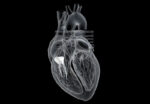Current surgical and medical treatment options for severe tricuspid regurgitation are extremely limited. However, this historically forgotten valve seems to have the option of transcatheter repair, nowadays. This observational study assessed the safety and feasibility of the MitraClip system for patients with severe chronic tricuspid regurgitation. All patients presented severe tricuspid regurgitation and...
Myocardial Damage in MAC
Mitral annulus calcification (MAC) affects between 8% and 23% of the population. It is more common in women and patients with renal insufficiency. This phenomenon is characterized by an increase in valvular annulus fibrosis, which can extend and affect the leaflets. The presence of MAC is associated with valve regurgitation or stenosis, increasing mortality and...
Edge-to-Edge Repair for Right Ventricular Function Deterioration
Tricuspid regurgitation (TR) has been associated with worse survival and hospitalization for cardiac failure (CF). The current guidelines recommend surgery as treatment, despite its 8 – 15% 30-day mortality rate. And there is no mention of a transcatheter intervention, especially for patients with severe TR and right ventricular deterioration. Several percutaneous intervention devices have recently...
Evolution of Cardiac Damage in MitraClip
Degenerative mitral valve regurgitation affects the mitral apparatus and is related to severe insufficiency. At present, surgery is the treatment of choice for patients at low risk. Oftentimes, this disease affects the elderly and/or those at high surgical risk, edge-to-edge repair being an excellent treatment alternative. We all know that the different stages of ventricular...
LIFE-BTK | Critical Limb Ischemia: Use of Bioresorbable Scaffold in Infrapatellar Lesions (LIFE-BTK)
Advanced stages of peripheral artery disease cause significant limitations in patients, such as critical limb ischemia (CLI), which manifests with resting pain and gangrene or ulcers of difficult resolution. Uncontrolled progression of this pathology might lead to major amputation, reduced life expectancy and increased healthcare costs. Prior research on infrapopliteal territory have shown contradicting results....
TricValve: 12-Month Evolution
Tricuspid regurgitation has become increasingly common, and current pharmacological treatment options are limited. In turn, surgery, which is a complex alternative, carries considerable rates of complications and mortality. In response to this issue, various percutaneous systems are being developed, such as edge-to-edge treatment, percutaneous annuloplasty, and caval valve implantation (CAVI), among others. In the analysis...
Retrograde Approach to Chronic Total Occlusions: Techniques and Outcomes According to the PROGRESS-CTO Registry
The retrograde approach for recanalizing chronic total occlusions (CTO) has undergone significant evolution since its introduction in 1990, improving both in terms of techniques and specialized materials. The increased skill applied to this strategy has resulted in increased success rates for the treatment of CTO in sites with an adequate volume of procedures. Given the...
Outcomes of the Use of Drug Coated Balloons in the Treatment of De Novo Coronary Lesions
Drug coated balloon (DCB) angioplasty offers a novel strategy for treating coronary artery disease. Studies assessing this strategy have shown clinical outcomes comparable to drug-eluting stents’ (DES) in patients with in-stent restenosis and de novo disease in small vessels. However, evidence for the use of DCB in large coronary vessels is limited. This observational, retrospective study DCB...
See the Presentations of the 2023 Perú Sessions
The XLVII SOLACI Regional Sessions – 16th Andean Region took place in Lima, Peru, between November 16 and 17, 2023.It was an extremely successful event that featured the participation of prestigious national and international guests and a high-level scientific program. Below, we share some of the presentations that were made during the Sessions. Dra. Carla...
Is TAVR Beneficial in Cardiogenic Shock?
The presence of cardiogenic shock (CS) in a setting of aortic stenosis ranges from 1% to 4%. The prognosis for this scenario is ominous due to subendocardial ischemia, which presents as a decrease in ventricular preload and an increase in afterload. Aortic valvuloplasty has been used in this context, but, unfortunately, it has been associated...









